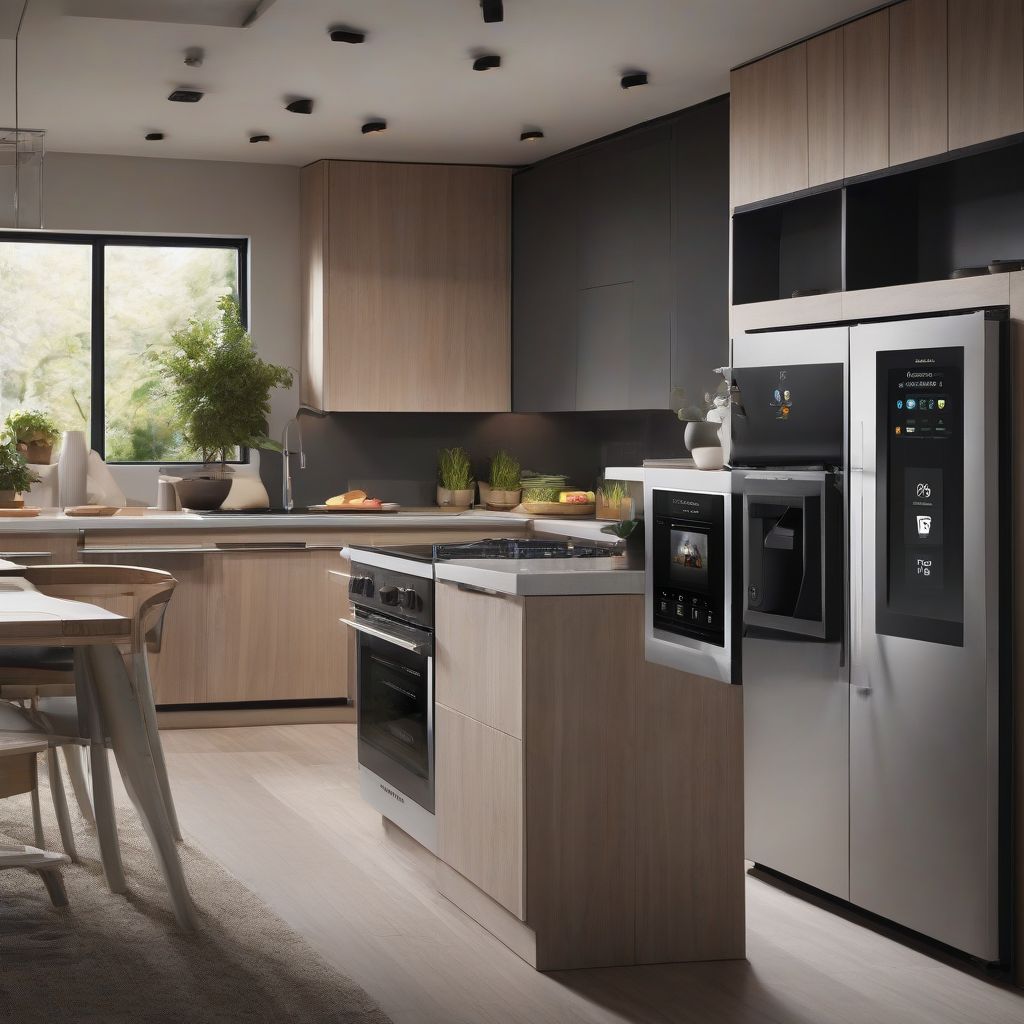Imagine a home that anticipates your needs, effortlessly adjusting the temperature before you even realize you’re uncomfortable. Picture lights that magically switch off when you leave a room, and appliances that run only when energy is most affordable. This isn’t a scene from a futuristic movie; it’s the reality of an energy-efficient smart home.
As a nutritionist and meal prepping coach, I understand the importance of efficiency and maximizing resources. Just like making healthy choices for our bodies, creating a sustainable and energy-efficient home is crucial for our planet and our wallets.
Understanding the Power of a Smart, Energy-Efficient Home
An energy-efficient smart home seamlessly integrates technology and thoughtful design to optimize energy consumption without sacrificing your comfort. It goes beyond simply installing solar panels; it’s about creating a cohesive ecosystem where devices communicate, learn your habits, and make intelligent decisions to reduce your carbon footprint and save you money on utility bills.
Top Strategies for Building Your Energy-Efficient Smart Haven
1. Smart Lighting: Illuminate Your Home, Not Your Energy Bills
Smart lighting is a fantastic entry point into the world of smart homes. Imagine lights that automatically dim when you relax in the evening or turn off when you leave a room.
- Smart Bulbs: Replace your traditional bulbs with energy-efficient LEDs that can be controlled remotely or automated to fit your schedule.
- Motion Sensors: Install sensors in areas like hallways and bathrooms to ensure lights are on only when needed.
- Smart Switches: Upgrade your light switches to allow for remote control, scheduling, and even voice-activated lighting.
2. Thermostat Control: Master Your Home’s Climate and Costs
Heating and cooling make up a significant portion of your energy bill. A smart thermostat, like those from Nest or Ecobee, can learn your preferred temperatures and adjust accordingly.
- Learning Algorithms: These thermostats track your adjustments and daily routines to create a personalized schedule, ensuring optimal comfort while minimizing energy waste.
- Remote Access: Control your thermostat from your smartphone to adjust the temperature even when you’re away.
- Geofencing: Some smart thermostats can detect when you’re home or away and automatically adjust the temperature, so you’re not heating or cooling an empty house.
3. Energy-Efficient Appliances: Invest in Sustainability
Appliances account for a large chunk of your home’s energy consumption. When choosing new appliances, look for the Energy Star label, indicating they meet strict energy-efficiency guidelines.
- Smart Refrigerators: These fridges can adjust their cooling cycles based on usage patterns and even alert you to expired food.
- Energy-Saving Washers and Dryers: Opt for front-loading washers that use less water and dryers with moisture sensors to prevent over-drying.
 Smart Home Appliances
Smart Home Appliances
4. Smart Plugs and Power Strips: Take Control of Phantom Energy Loss
Did you know that many electronics continue to draw power even when turned off? This “phantom energy” can add up over time.
- Smart Plugs: Plug devices like lamps, chargers, and entertainment systems into smart plugs to control their power remotely and on a schedule.
- Advanced Power Strips: These strips automatically cut power to devices when they’re not in use, eliminating energy waste.
5. Renewable Energy Sources: Harness the Power of the Sun
Consider incorporating renewable energy sources into your home’s energy ecosystem.
- Solar Panels: Installing solar panels can significantly reduce your reliance on the grid and even lead to potential energy savings.
- Solar Water Heaters: Supplement your water heating with solar energy, reducing your gas or electricity consumption.
6. Water Conservation: Save Water, Save Energy
Water heating accounts for a considerable portion of your energy usage. By implementing water-saving practices, you can reduce both your water and energy bills.
- Low-Flow Fixtures: Install low-flow showerheads, faucets, and toilets to significantly reduce water consumption.
- Smart Irrigation Systems: These systems adjust watering schedules based on weather conditions, optimizing water usage for your lawn and garden.
7. Home Energy Monitors: Gain Insights and Take Action
Understanding your energy consumption patterns is key to making informed decisions. Home energy monitors provide real-time data on your energy usage.
- Smart Meters: Many utility companies now offer smart meters that provide detailed energy consumption reports.
- Energy Monitoring Devices: Consider devices like Sense or Emporia that analyze your home’s energy flow and identify energy hogs.
Optimizing Your Smart Home for Maximum Efficiency
Creating an energy-efficient smart home is an ongoing process of refinement and adaptation.
- Regularly Review Device Settings: Ensure your smart devices are configured for optimal energy efficiency and adjust settings as needed based on your usage patterns and preferences.
- Embrace Automation: Leverage the power of automation to create schedules and routines that optimize energy consumption without you having to lift a finger.
- Stay Informed: Technology is constantly evolving, so stay up-to-date on the latest energy-saving devices and practices.
Conclusion: Your Journey to a Smarter, Greener Home
Building an energy-efficient smart home is an investment in your comfort, your wallet, and the future of our planet. By implementing these strategies, you can significantly reduce your environmental impact and create a home that’s not only intelligent but also environmentally responsible. Start small, incorporate one strategy at a time, and watch as your home transforms into a beacon of energy efficiency and sustainability.
What steps will you take today to create your energy-efficient smart home? Share your thoughts and experiences in the comments below!
[amazon bestseller=”smart home energy monitor”]
